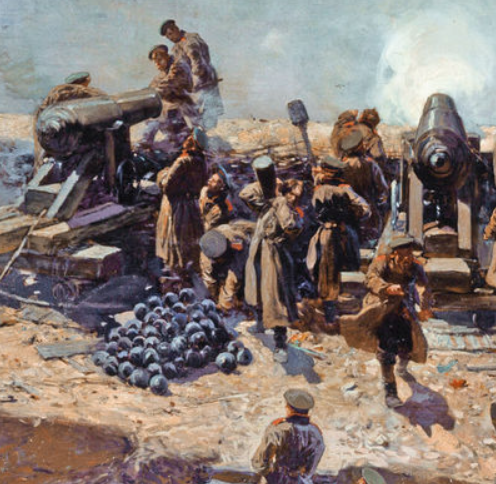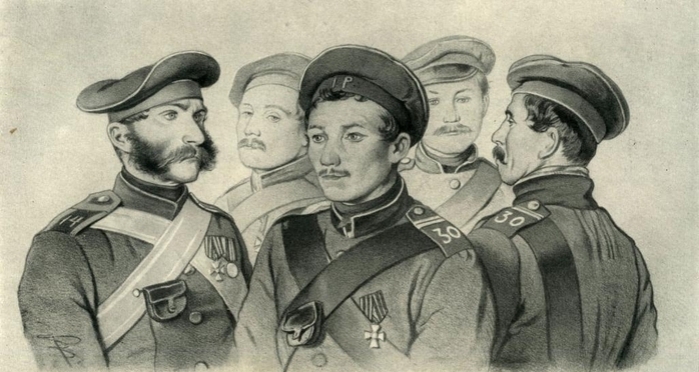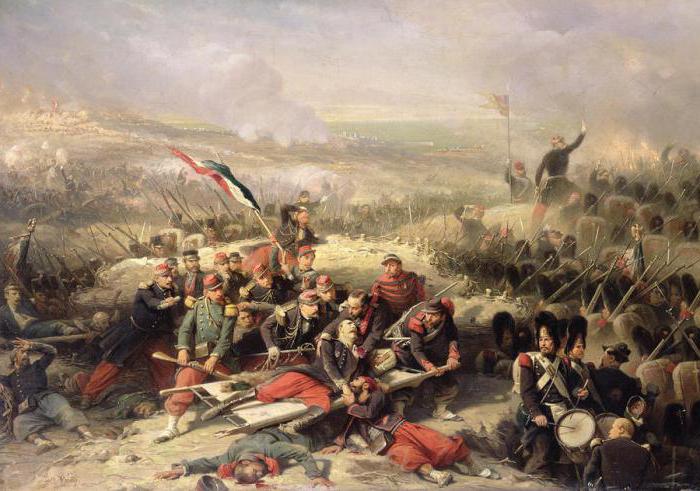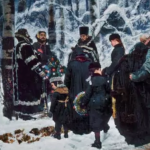
21.12.2022
The work is about the culminating episode of the Crimean War – the siege of Sevastopol by the superior forces of Anglo-French-Turkish coalition, which lasted from autumn 1854 to August 1855. The book reflects the situation in the city, specific military operations and experiences of their participants. Three stories in the series – “Sevastopol in December”, “Sevastopol in May”, “Sevastopol in August 1855” – cover the whole period of the siege
When was it written?
In 1855, in sync with the events described, most of the action, in the army camp. First there was the idea of the story “Sevastopol by day and by night”, broken into two parts: “day” “Sevastopol in December” was composed from March 27 to April 25, “night” “Sevastopol in May” was created in about a week in the twenties of June. Work on “Sevastopol in August” started in mid-September and was completed after the author left the front, at the end of the year in St. Petersburg.
“The minute a shell, you know, flies at you, it will surely occur to you that this shell will kill you; but the sense of self-love sustains you, and no one notices the knife that cuts your heart”.
How is it written?

In different ways. The first text is more like an essay. An invisible interlocutor leads the reader around the city: here is a boulevard with music, here is a hospital with heroes, and here is where they fight, kill and die; Boris Eichenbaum even called the first story a “guidebook to Sevastopol”. The second text is a psychological sketch in the form of a story. Tolstoy describes with frightening familiarity the thoughts and feelings of the rather numerous military characters. The story ends with a spectacular allegory: the warrior who believes he will die remains alive, while the warrior who thinks he has been saved dies.
The third text is, according to Eichenbaum’s observation, “a sketch of a larger form”. The story of two brothers who, having met at the beginning of the story, perish at the end of it without ever seeing each other again; it is as if the author concludes that reality cannot be grasped through an essay or reasoning, but requires expression through a complex (ideally family) plot. With all these different modes of writing, Tolstoy was solving one problem: to convey reality “as it really is.” “The hero of my story, whom I love with all the strength of my soul, whom I have tried to reproduce in all his beauty and who has always been, is and will always be beautiful, is the truth.
What influenced her?
Tolstoy, despite his sometimes very strict tone in assessing the classics and contemporaries, was a very receptive author. Researchers find in The Tales of Sevastopol the influence of Thackeray, whom Leo Tolstoy was reading in English at the time (“objectivity”), the moral tradition from Rousseau to Caramzin, Homer (frankness in the depiction of battle details), Stendhal (the theme of money in war; Tolstoj himself indirectly declared this author to be his precursor in the description of war), Sterne with his discursive experiments (Sterne was translated into Russian by Tolstoj) and even Harriet Beecher Stowe (from her story Uncle Tim, published in the Sovremennik in September 1853, Tolstoj borrowed the tone of the conversation with the reader: “Do you see there, in the distance, a house painted with dark paint? “).

In addition, Tolstoy (at least in the first text of the cycle) drew on current magazine and newspaper journalism. The genre of “letters from the scene”, known since the time of the “Letters of the Russian traveler”, perfectly survived until the mid-fifties. “Letter from Sevastopol. Sevastopol, December 21, 1854” (G. Slavoni), “From Simferopol, January 25, 1855” (N. Mikhno) – the titles are typical. A. Komarnitsky’s essay “Sevastopol at the beginning of 1855” (Odessa bulletin, April 2 and 5) reminds Tolstoj’s text not only by its title but also repeats the method of address to the reader (“Do you know sailors of Sevastopol? If you say that you know, I will ask you: have you been to Sevastopol, even once, since the day of its siege? You haven’t? – Then you don’t know its defenders”).
How was it published?
All three stories were first published in the Sovremennik magazine: twice under different signatures, and once without any indication of the author.

The first appeared in the sixth issue of 1855 with the signature “L. N. T.” (All previous texts of the writer published at that time and in the same edition were signed in a similar way: L. N. “Childhood” and “The Raid” – and L. N. T. “Adolescence” and “Notes of a Marker”) and with minor censorship edits (“white-haired” midshipman became “young” to avoid mocking intonation, “stinking filth” and “unpleasant traces of military camp” disappeared as a hint of shortcomings of military leadership).
The second story (known to us as “Sevastopol in May”; when first published in the September 1855 issue it was called “A Night in the Spring of 1855 in Sevastopol”) was subjected to monstrous censorship. At first, a lot of corrections were made by the editorial board, which highly appreciated the artistic level of the story, but was afraid of the “mercilessness and despair” (and it was not only cutting, but also putting in “patriotic phrases”). The Chairman of the Censorship Committee Mikhail Musin-Pushkin forbade publication of the text altogether, but in the end (perhaps because he learned that Tolstoy’s work was of interest “at the very top”) he permitted publication – even though he had already interfered substantially. As a result, the editors themselves removed the author’s signature and apologized to Tolstoy for not being able to act otherwise. The author finished his third story just before the New Year; in order to have time to publish it in the January 1856 issue of Sovremennik, the editors cut the manuscript into pieces and sent it to eight typesetters. The author, who was in St. Petersburg, was able to follow the process and make additions to the text as he was typing. Apparently, he was satisfied with the result, because under “Sevastopol in August 1855” the signature “Earl L. Tolstoy” first appeared in print.




